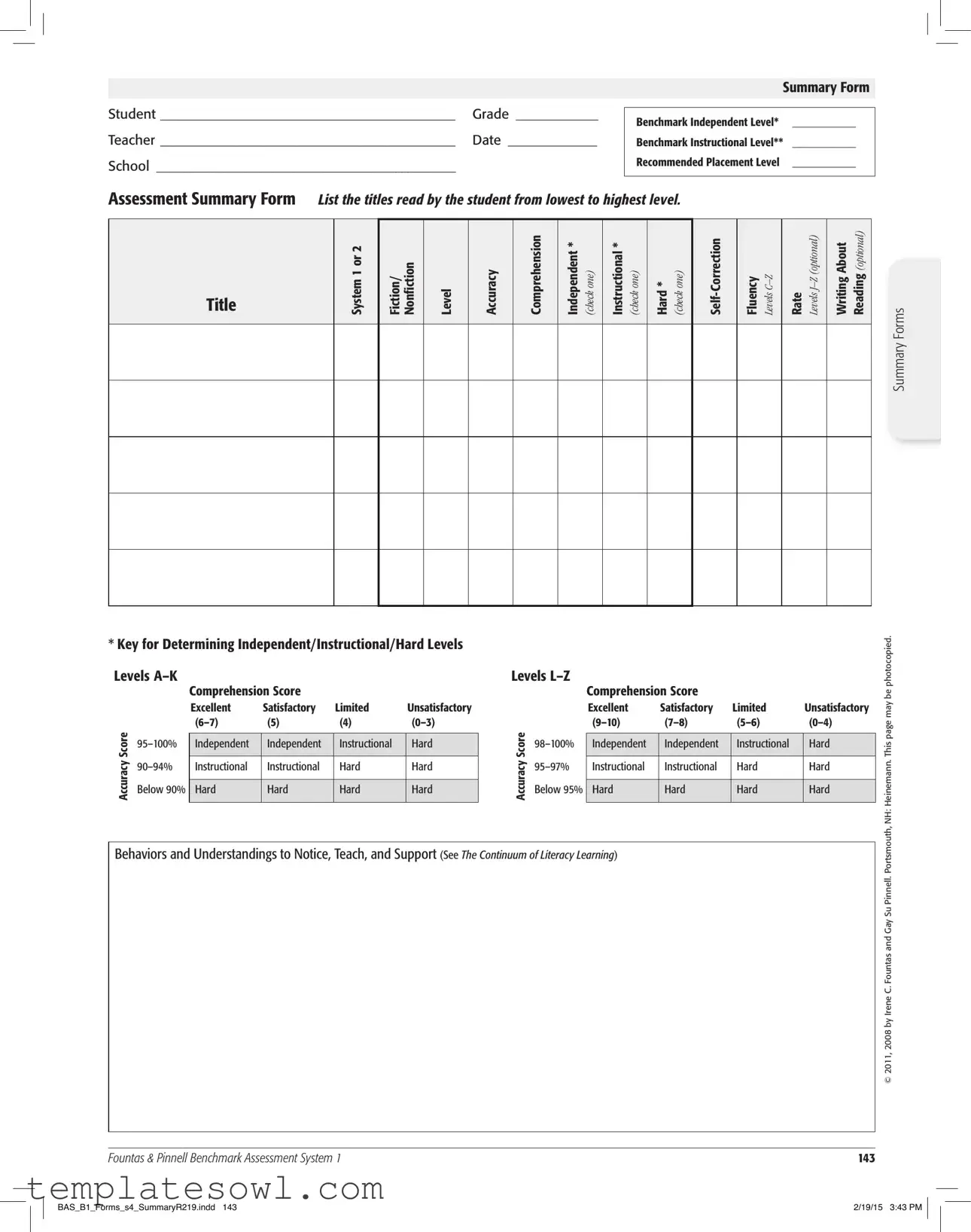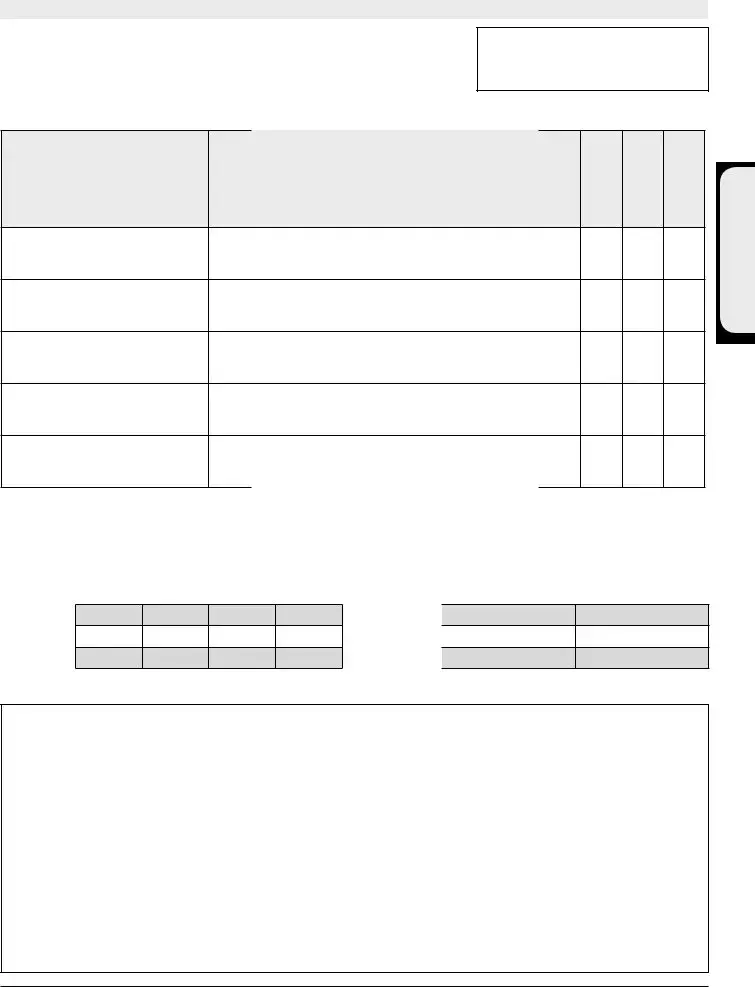What is the purpose of the Summary Sheet form?
The Summary Sheet form serves as a tool for educators to assess and document a student's reading level and comprehension skills. It provides critical information needed for instructional planning and helps identify the student's independent and instructional levels of reading proficiency.
What information do I need to fill out in the Summary Sheet form?
Key details to complete include the student’s name, grade, and the teacher's name. Additionally, it requires the date, the school's name, and the assessment summary that lists reading titles from lowest to highest level, along with levels of accuracy and comprehension.
How do I determine a student's Independent, Instructional, and Hard levels?
These levels are determined using a scoring system based on students’ comprehension and accuracy during assessments. For levels A-K, the scores for comprehension and accuracy range from excellent to unsatisfactory, with specific percentage thresholds outlined in the key provided. For levels L-Z, similar criteria apply, focusing on both comprehension scores and accuracy percentages.
What do the levels A-K indicate?
Levels A-K focus on early reading skills. An independent level means the student can read with high accuracy and comprehension. Instructional levels indicate that the student needs some support while reading, whereas hard levels denote that the text is too challenging for the student, requiring substantial assistance.
What about levels L-Z?
Levels L-Z are designed for more advanced readers. As with levels A-K, independent levels indicate effective reading without assistance, whereas instructional and hard levels highlight the need for more support. The criteria for scoring remains the same, with emphasis on comprehension and accuracy.
What types of reading materials should be included in the assessment summary?
Both fiction and nonfiction titles should be listed. It is important to arrange these titles in order from the lowest level the student can read to the highest. This organization allows for a clear understanding of the student's reading progression and strengths.
Is it necessary to document fluency and reading rate on the Summary Sheet form?
While documenting fluency and reading rate is optional, it can provide additional insight into a student’s reading abilities. This information can inform instructional strategies tailored to the specific needs of the student.
How can the data on the Summary Sheet benefit the student’s learning?
The data collected on the Summary Sheet helps educators tailor their teaching approaches to fit individual reading levels. By understanding a student's strengths and weaknesses, teachers can provide targeted support, enhancing the overall learning experience.
Can the Summary Sheet form be duplicated for use?
Yes, the Summary Sheet form can be photocopied for ease of use. This allows educators to efficiently assess multiple students or keep a record of assessments over time.
Where can additional resources or guidance on assessment be found?
Further information and resources are often available through educational institutions or literacy programs. Specifically, the referenced "Continuum of Literacy Learning" offers strategies for behaviors and understandings to notice, teach, and support in literacy development.

